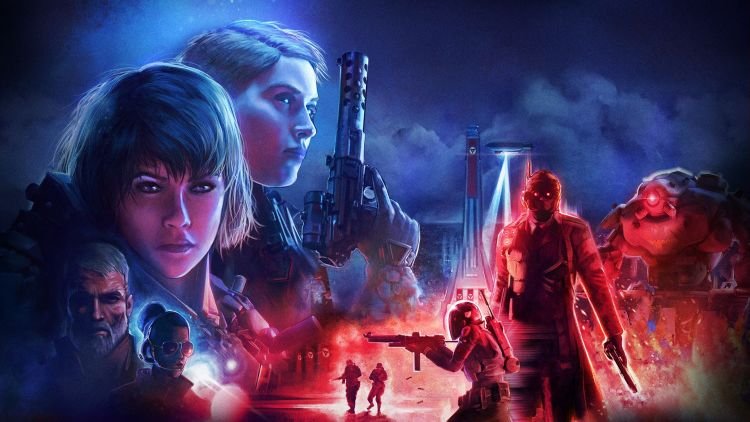Machine Games’ modern Wolfenstein series excels on two fronts: visceral gunplay and well-written stories. The cooperative spinoff Wolfenstein: Youngblood doubles the player count but halves what made The New Order and The New Colossus so great. A practically nonexistent narrative is fortunately carried by excellent combat and fantastic level design thanks to Dishonored developer Arkane Studios’ contributions, but dull RPG mechanics and a half-baked progression system ultimately hold Youngblood back from being truly great.
Game Name: Wolfenstein: Youngblood
Platform(s): PlayStation 4 (Reviewed), Xbox One, PC
Publisher(s): Bethesda Softworks
Developer(s): Machine Games/Arkane Studios
Release Date: July 25, 2019 (PC), July 26, 2019 (Consoles)
Price: $29.99/$39.99 (Deluxe)
Wolfenstein: Youngblood is set almost 20 years after 2017’s Wolfenstein II: The New Colossus, and the game has little to no narrative connections to the other Wolfenstein games barring a few familiar faces. In Youngblood, you play as one of B.J. Blazkowicz’s twin daughters as they journey to Nazi-occupied Paris to search for their missing father. The game is heavily designed around co-op, so a friend can take control of the sister you don’t choose, but if you’d rather play by yourself, the other sister can also function as an AI companion.
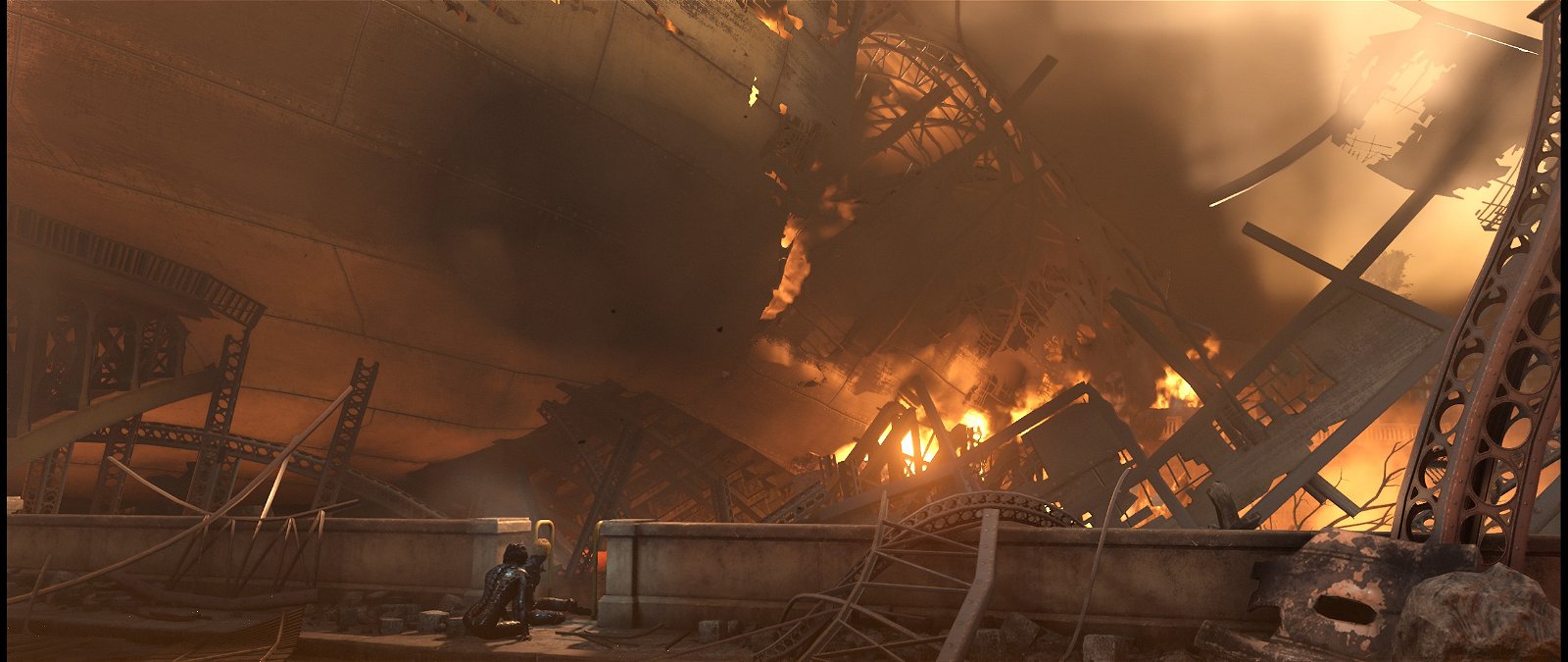
Youngblood begins in a similar vein to previous Wolfenstein games, with a heavy emphasis on story and characters, but after completing the game’s linear tutorial mission, it becomes incredibly apparent that Wolfenstein: Youngblood is a very different game from its predecessors. It turns out the game has more in common with Destiny and The Division than it does with The New Order and The New Colossus.
That’s not to say there’s loot popping out of every Nazi you kill, but Youngblood shares quite a few features with contemporary cooperative online shooters. You and your co-op partner complete side missions to level up in order to take on main missions called “raid missions” that progress the story. The game isn’t linear either, allowing you to tackle missions in any order so long as you think you’re geared up enough to complete them. This is a wholly nonlinear experience, which provides a welcome amount of freedom to goof off with a friend, but causes the game to lose focus and feel aimless at times, especially when grinding meaningless side missions to acquire experience and currency.
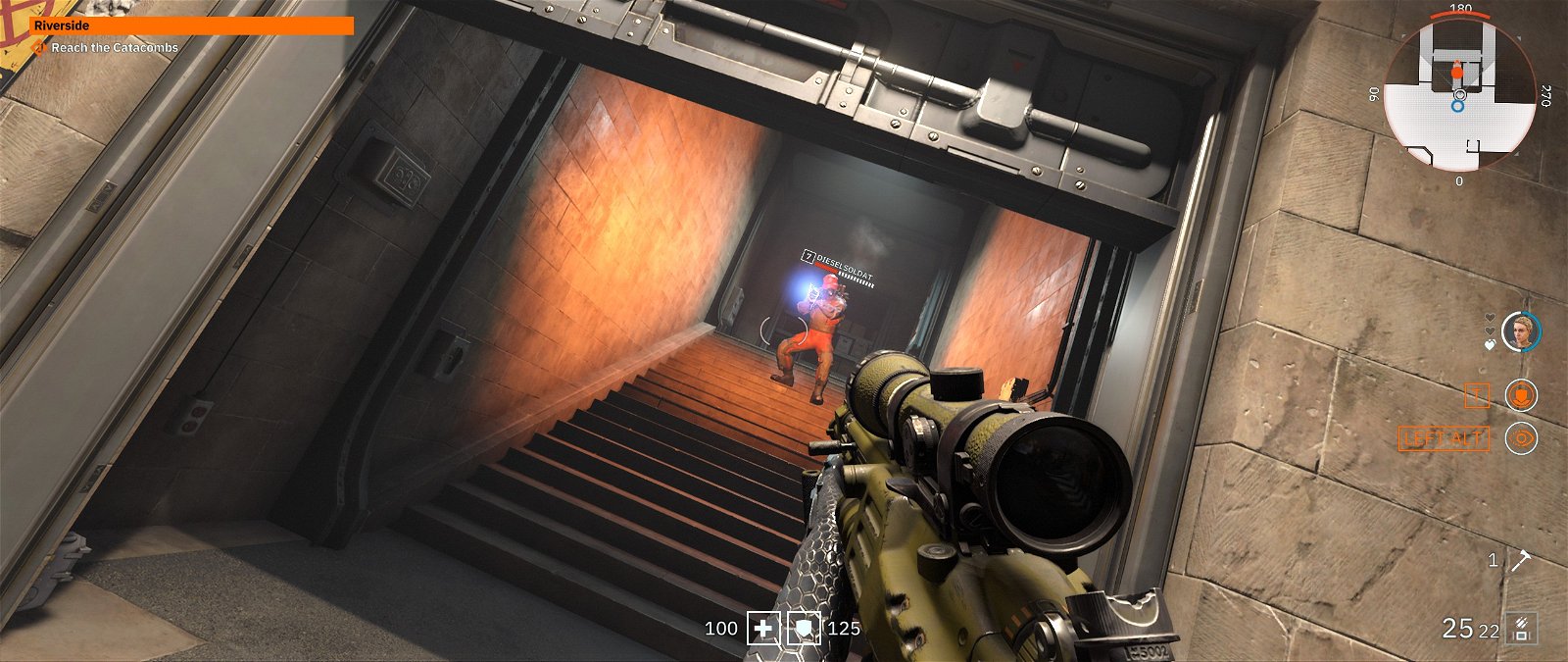
Outside of Youngblood‘s main story missions, of which there are only five, you’ll be out and about in the game’s quasi-open world, comprised of a handful of levels that can be traveled between using predetermined metro entrances and exits. Traditional side missions are picked up in the game’s hub area, which is as dull and lifeless as they come. Quest givers might as well be cardboard cutouts, and the quests themselves are repetitive and uninspired, consisting mostly of “kill the specified Nazi” or “go find the Nazi thing.” While you’re out in the field, you’ll occasionally be contacted via radio about various “actions” which are generic world events that involve, you guessed it, killing more Nazis.
While the mission objectives may be a bit weak, Youngblood‘s gameplay more than makes up for it. The shooting is just as tight as you’d expect from a Wolfenstein game and that, paired with Arkane’s excellent wide-open level design, makes the whole experience a joy to play. Youngblood also adds a handful of new gameplay features to the experience, though some of them don’t work too well in practice. “Peps” are emotes that provide gameplay buffs like restoring health and armor, and these are a nice novelty at first, but they quickly become abusable and make the game pretty easy, especially with some of the more powerful ones. The pep included in the game’s Deluxe Edition, for example, restores a whopping 150 armor and only has a cooldown of a few seconds per each sister.
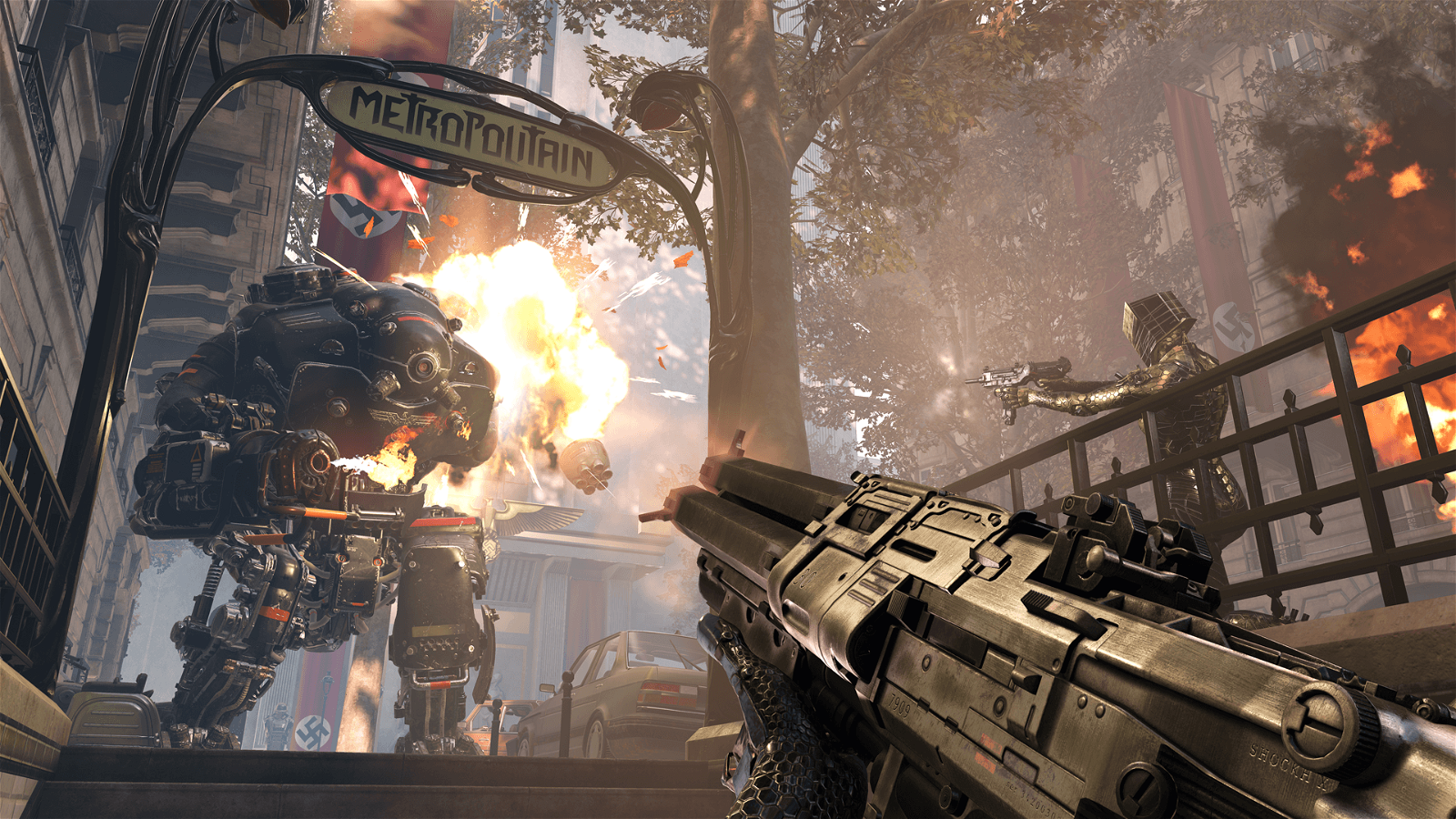
Youngblood‘s other new additions mire the combat in repetition. Like previous Wolfenstein games, enemies have armor on top of their normal health, but in Youngblood certain armor is weak to certain weapons, and if you use the incorrect weapon, it’s as if your bullets bounce right off your target. In theory, this is a system that encourages you to experiment with different weapons, but in practice, you always run out of the specific ammo type you end up needing, so you’ll have to unload a ton of shots into a resistant enemy because you might only have ammo for certain weapons. This problem sort of alleviates itself once you acquire Youngblood‘s full arsenal, but it the issue still rears its head from time to time in the endgame.
Not only that, but the game’s RPG mechanics make enemies way spongier than they need to be. Enemies take a lot of shots to go down, especially bosses, and you’ll waste large amounts of ammo and time to clear rooms of Nazis. It’s 100% artificial difficulty, because the game itself is not that hard, mostly due to the dumb AI.
The enemies never quite know which sister they should be aiming at. This makes boss encounters a joke, because you can just stand in the open and hammer them with shots and the boss will just fire a few shots at you, and then a few shots at the other player, and repeat, never dealing enough damage to kill either of you and rarely even hitting you if you stay on the move. You can also just crouch behind cover or hide inside a different room because the enemies’ pathfinding is awful and they won’t be able to get to you. That’s if they even acknowledge your presence. I’ve unloaded multiple clips into panzerhunds that just keep walking like nothing is wrong.
If you’re playing solo, you’ll be stuck with an incompetent AI companion as your partner, too. The partner AI rarely gets in the way, but it never does enough damage to aid you in any significant way. It mainly serves as a target to draw the heat away from you when things get too hectic. There were a few occasions when it would hinder me, though. Sometimes it would stand in my way and prevent me from shooting, and other times it would refuse to revive me even though I was crawling on the floor in plain sight with no enemies around. A human partner is highly recommended for Youngblood, and while playing solo is doable (I spent the majority of my playthrough alone), you’ll just be shooting two players’ worth of enemies by yourself.
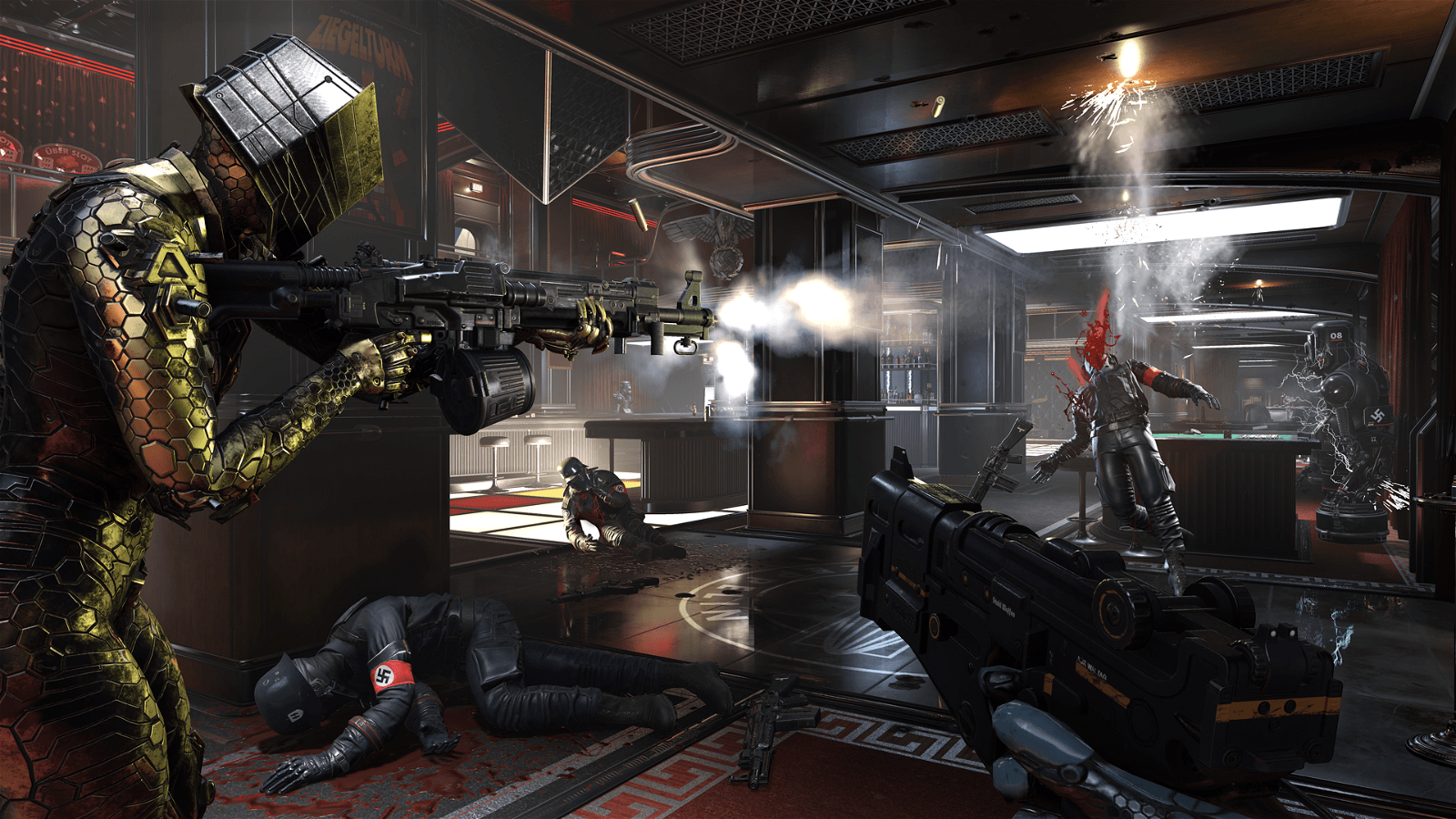
The leveling system offers little in the way of interesting upgrades. Each level up grants you a permanent 2% increase in damage as well as a skill point. Unlockable skills are incredibly basic, and after you get the few important ones like dual-wielding, there aren’t any cool skills to look forward to unlocking. Visiting the upgrade screen in Wolfenstein: Youngblood is rarely exciting, and it makes the leveling system feel more like a chore than a worthwhile new addition to the Wolfenstein formula.
Weapons also have individual upgrades and progression, but they also failed to garner anything more than a “meh” during my time with Youngblood. Weapon attachments like magazines and scopes provide stat bonuses to certain aspects of each weapon, and if you equip at least three attachments of the same brand, you’ll get an additional bonus. Brand bonuses are negligible in practice, and the minute stat increases and tradeoffs made Youngblood feel like a bland numbers game rather than a skill-based shooter.
Even the game’s many customization options fall flat. There are multiple skins available for each weapon as well as the armor that the twin sisters wear, but they all boil down to simple recolors and re-skins. These can be purchased with earnable in-game currency, the same currency used to purchase weapon attachments, but it’s worth noting that they can also be acquired with premium currency. Considering how barebones these cosmetics are though, there’s very little reason to spend in-game money on them, especially when that same money can go towards upgrades that have tangible gameplay bonuses.
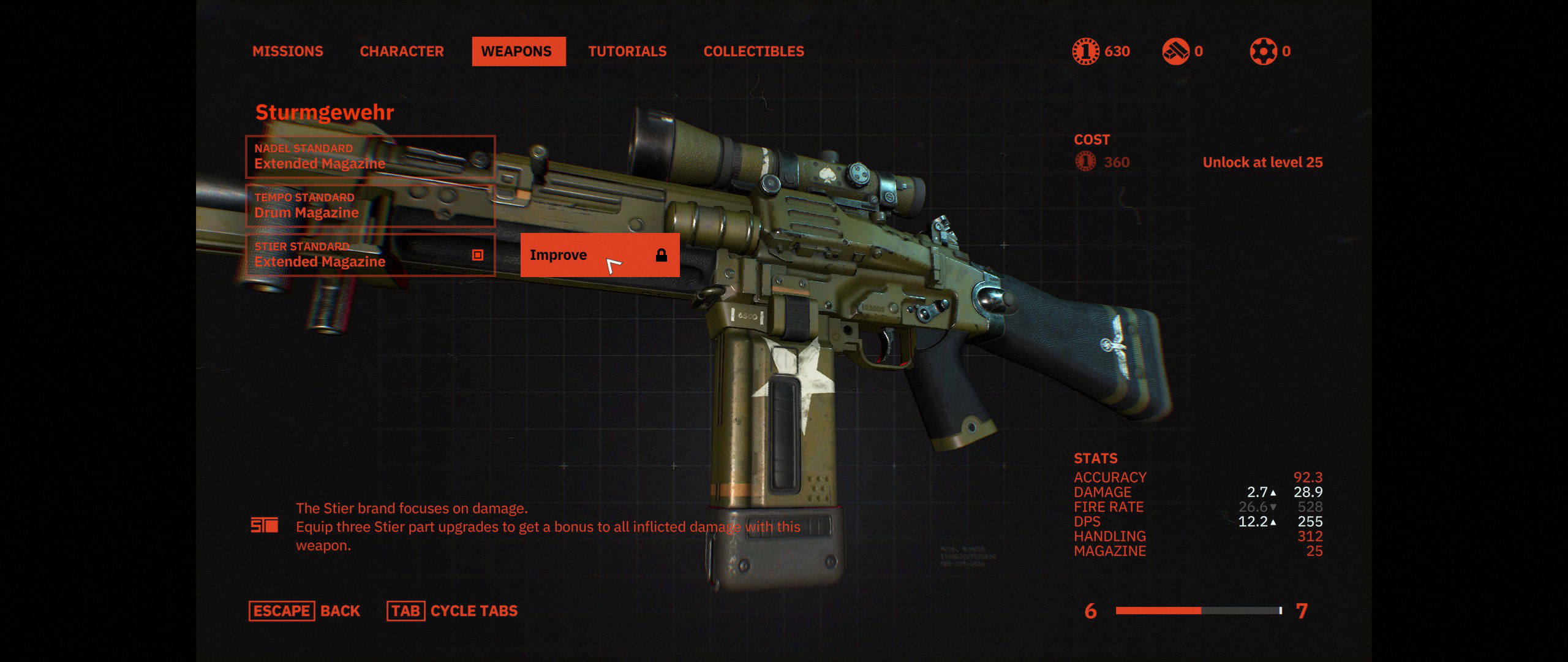
Despite previous Wolfenstein entries having their stories at the center of the experience, Youngblood relegates the narrative to the sidelines. The plot is paper-thin, and the characters, while likable, don’t develop in any meaningful ways. Twin protagonists Jess and Soph crack jokes and play pranks on one another during their time in Paris, but these quickly begin to repeat and get old. The rest of the cast gets even less screen time and certain moments that are meant to be impactful miss the mark because the characters aren’t developed enough. The game’s ending feels rushed and fails to deliver a satisfying conclusion, introducing a bevy of new plot points only for the credits to roll minutes later following a spongy, uninspired boss fight. The few story beats and cutscenes throughout Youngblood, particularly those during its opening hour, are great, but sadly the game doesn’t build on the plot threads it sets up in any significant manner.
While it tries to create its own unique identity to set itself apart from its predecessors, Wolfenstein: Youngblood ultimately ends up feeling like a glorified expansion for Wolfenstein II. The RPG mechanics feel tacked on, the story is weak, and the armor changes result in spongy enemies, but the shooting and level design are excellent. For fans of Wolfenstein, there is more Wolfenstein content to be played here, as long as you can tolerate repetitive, cookie-cutter mission structures. Wolfenstein: Youngblood is painfully average, and the only things that make the tedium worth enduring are Machine Games’ visceral gunplay and Arkane Studios’ expertly-crafted levels.
Review Disclosure Statement: Wolfenstein: Youngblood was provided to us by Bethesda for review purposes. For more information on how we review video games and other media/technology, please go review our Review Guideline/Scoring Policy for more info.
Summary
Wolfenstein: Youngblood still features the excellent gunplay that the series is known for, only this time it’s paired with excellent level design thanks to the contributions of Arkane Studios. Unfortunately, the game falls flat just about everywhere else, with a paper-thin story, tacked-on RPG mechanics, repetitive side missions, and dumb AI.
Pros
- Tight, visceral gunplay
- Wide-open and vertical levels
Cons
- RPG mechanics feel arbitrary
- Lame upgrades
- Story is practically nonexistent
- Repetitive and bland side content
- Exploitable enemy AI


